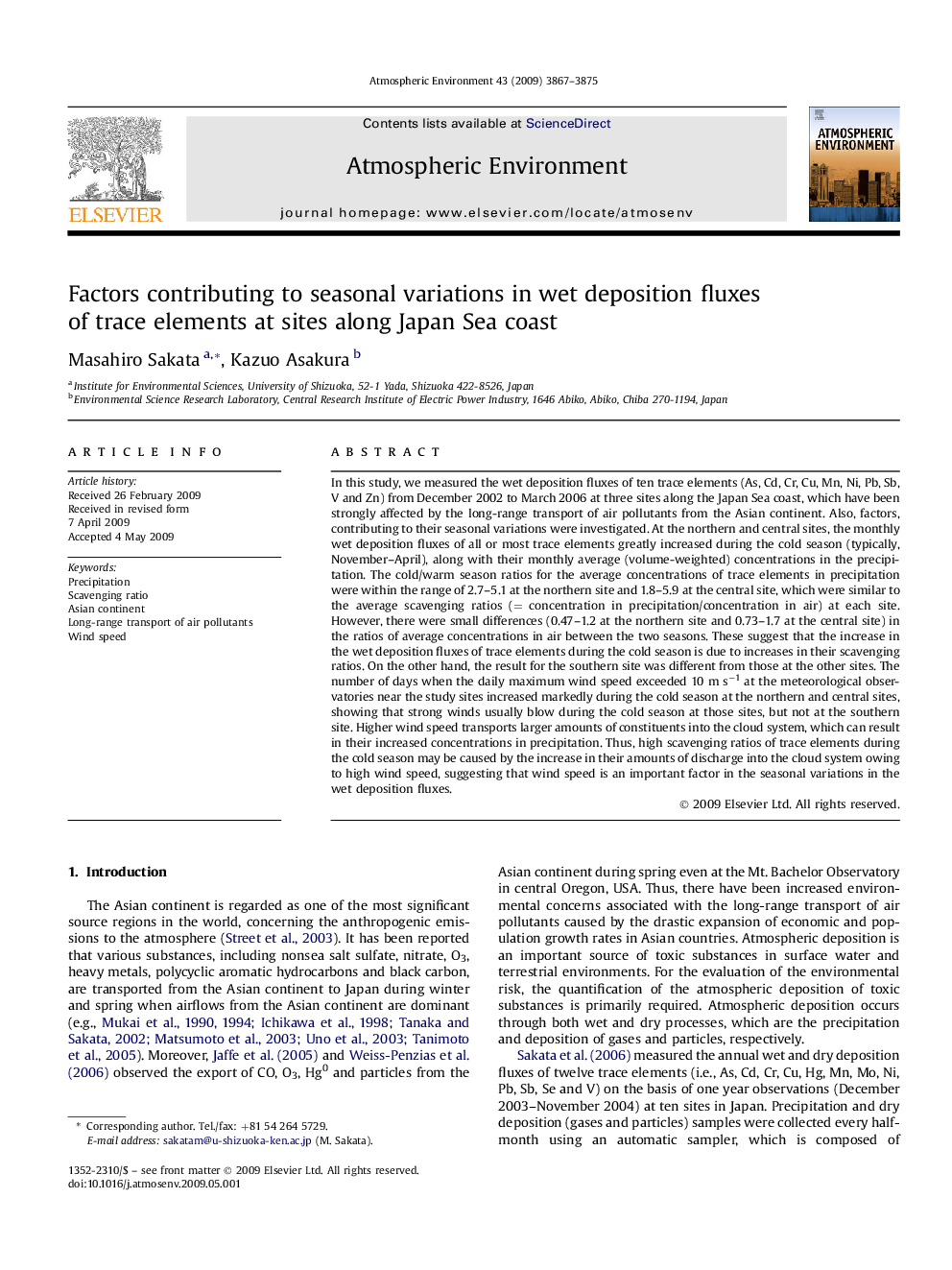| Article ID | Journal | Published Year | Pages | File Type |
|---|---|---|---|---|
| 4441474 | Atmospheric Environment | 2009 | 9 Pages |
In this study, we measured the wet deposition fluxes of ten trace elements (As, Cd, Cr, Cu, Mn, Ni, Pb, Sb, V and Zn) from December 2002 to March 2006 at three sites along the Japan Sea coast, which have been strongly affected by the long-range transport of air pollutants from the Asian continent. Also, factors, contributing to their seasonal variations were investigated. At the northern and central sites, the monthly wet deposition fluxes of all or most trace elements greatly increased during the cold season (typically, November–April), along with their monthly average (volume-weighted) concentrations in the precipitation. The cold/warm season ratios for the average concentrations of trace elements in precipitation were within the range of 2.7–5.1 at the northern site and 1.8–5.9 at the central site, which were similar to the average scavenging ratios (= concentration in precipitation/concentration in air) at each site. However, there were small differences (0.47–1.2 at the northern site and 0.73–1.7 at the central site) in the ratios of average concentrations in air between the two seasons. These suggest that the increase in the wet deposition fluxes of trace elements during the cold season is due to increases in their scavenging ratios. On the other hand, the result for the southern site was different from those at the other sites. The number of days when the daily maximum wind speed exceeded 10 m s−1 at the meteorological observatories near the study sites increased markedly during the cold season at the northern and central sites, showing that strong winds usually blow during the cold season at those sites, but not at the southern site. Higher wind speed transports larger amounts of constituents into the cloud system, which can result in their increased concentrations in precipitation. Thus, high scavenging ratios of trace elements during the cold season may be caused by the increase in their amounts of discharge into the cloud system owing to high wind speed, suggesting that wind speed is an important factor in the seasonal variations in the wet deposition fluxes.
